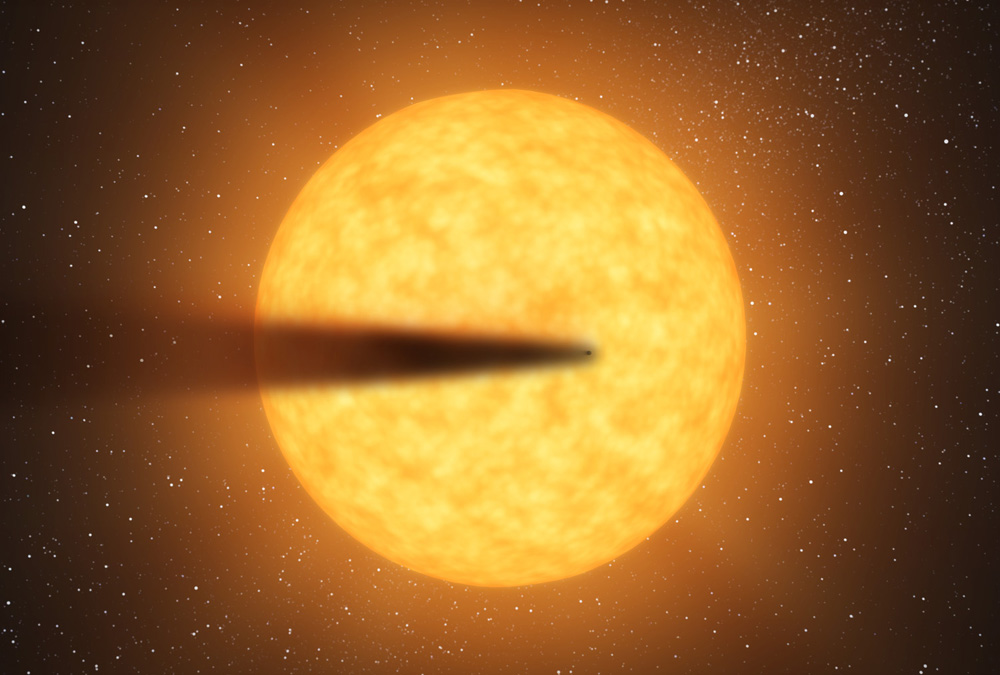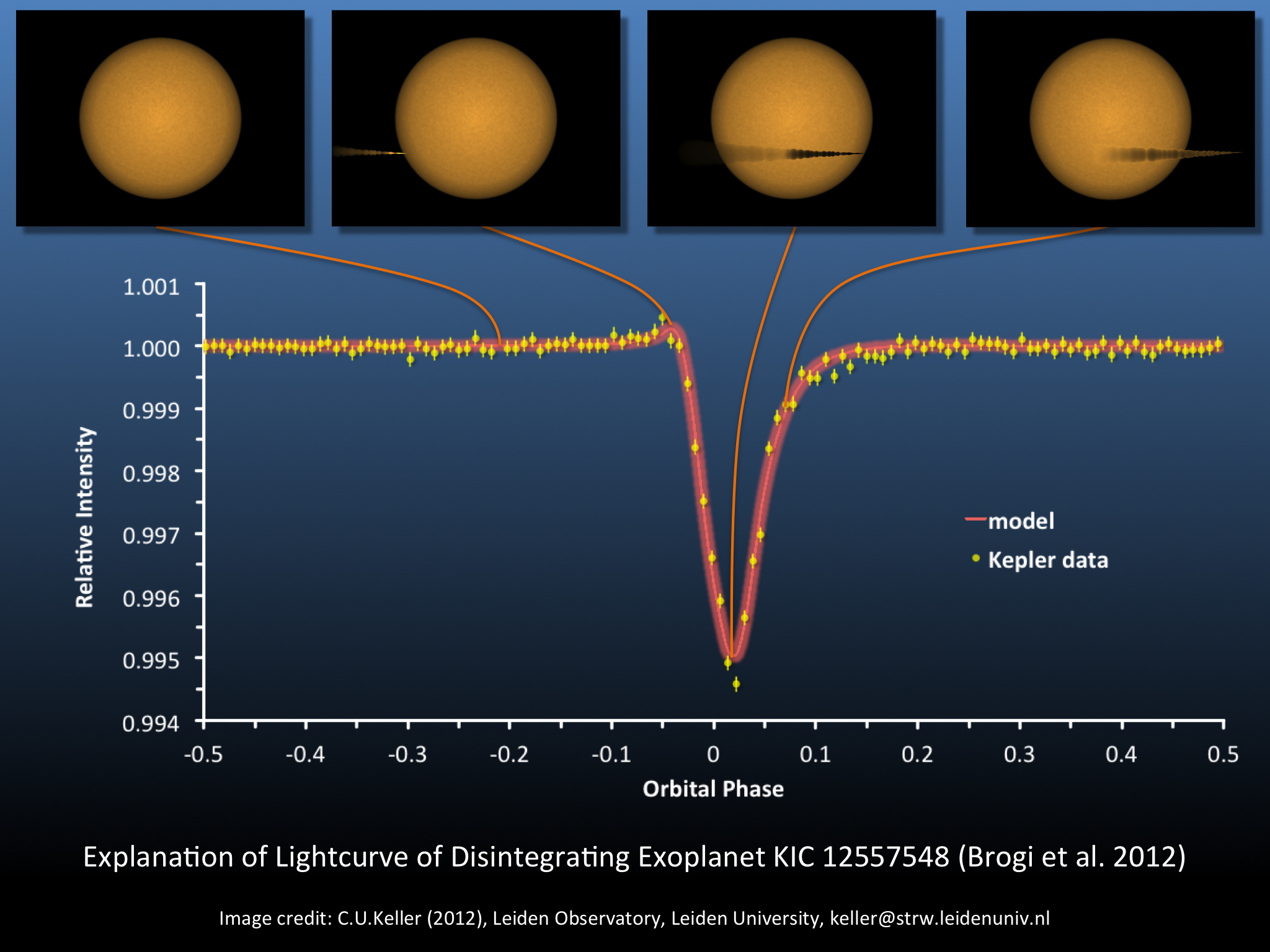Research on Exoplanets
In 2009 KEPLER satellite mission started gathering information on planetary transits. The unprecedented detail of space observations gave the opportunity to astronomers to discover several hundreds of new exoplanet systems. These new discoveries play an important role in our understanding of planetary formation. KIC 12557548b is an example of such a case. It is a transiting extrasolar planet, discovered by Rappaport et al. in 2012, which has possibly a comet-like tail. KIC 12557548b is becoming a prototype of a new class of extrasolar planets, which are so close to their host stars, that are being disintegrated creating a spectacular come-like dusty tail. This tail, not the planet itself, causes the transit like events. An observing campaign is necessary in order to put constraints on the chemical composition, particle size, mass loss and other dust properties of the planet and its tail. Our team carries out multi-wavelength observations of the planetary transits after 2014 and 2015, using the 2.3 m Aristarchos Telescope at Helmos Observatory, while the 0.4 m telescope at UOAO performs supporting observations.
Research on exoplanets at UOAO is still under development, while a few international observing programs requested follow-up observations. An example of such a collaboration refers to the is a triple stellar system KIC 2835289, which was observed in May 2015, in parallel with collaborators worldwide (Prsa A., Conroy K., at Villanova University (USA) and Vanderbilt University (USA). This targt consists of an inner ellipsoidal variable with an orbital period of ~0.86 days and an outer star that eclipses the inner pair every ~750 days. Two eclipse events were observed by the Kepler mission, but they do not fully constrain the dynamical models. The gathered observations are still under processing and an announcement will come out soon.
The University of Athens Observatory participates on international observing campaigns for exoplanets research, which resulted in publications and scientific announcements in refereed journals.

